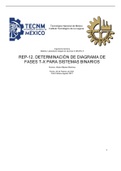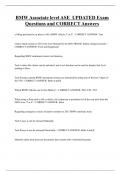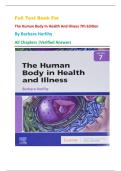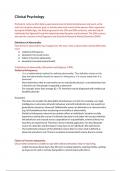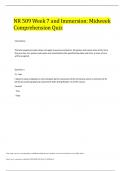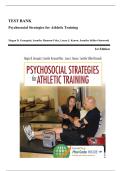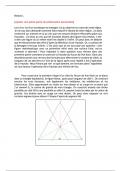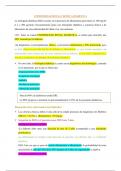From Civil War to World War, 1865–1920
(Merged Question paper and marking scheme): Wednesday 15 May 2024
AS
HISTORY
The making of a Superpower: USA, 1865–1975
Component 1K From Civil War to World War, 1865–1920
Wednesday 15 May 2024 Afternoon Time allowed: 1 hour 30 minutes
Materials
For this paper you must have:
an AQA 16-page answer book.
Instructions
Use black ink or black ball-point pen.
Write the information required on the front of your answer book. The Paper Reference is
7041/1K.
Answer two questions.
In Section A answer Question 01.
In Section B answer either Question 02 or Question 03.
Information
The marks for questions are shown in brackets.
The maximum mark for this paper is 50.
You will be marked on your ability to:
– use good English
– organise information clearly
– use specialist vocabulary where appropriate.
Advice
You are advised to spend about:
– 50 minutes on Section A
– 40 minutes on Section B.
,AS History: The Making of a Superpower: USA, 1865–1975
Component 1K: From Civil War to World War, 1865–1920
May 2025
Key Areas to Revise:
1. Reconstruction (1865–1877)
The End of the Civil War: Understand the key events and outcomes of the American Civil War
(1861-1865), focusing on the Union victory and the abolition of slavery under the 13th Amendment
(1865).
Reconstruction Era: Study the challenges faced by the U.S. in the Reconstruction of the South,
including the introduction of the 13th, 14th, and 15th Amendments which aimed to extend civil
rights to African Americans. Focus on President Andrew Johnson’s policies and the rise of
Radical Republicans.
The Failure of Reconstruction: Examine the end of Reconstruction in 1877, with the Compromise
of 1877 and the withdrawal of federal troops, leading to the Jim Crow laws and the entrenchment
of segregation in the South.
2. Industrialization and the Growth of the U.S. Economy
Industrial Expansion: Explore the period of rapid industrialization in the late 19th century,
particularly the rise of major industries such as steel, oil, and railroads. Study key figures like
Andrew Carnegie (steel) and John D. Rockefeller (oil).
The Rise of Corporations and Trusts: Understand the growth of corporations, monopolies, and
trusts, and the role of figures like J.P. Morgan in shaping the economic landscape. Study the
economic concentration and its impact on the labor force.
Labor Movements: Focus on the labor unrest and the growth of labor unions, including the
Haymarket Affair (1886), the Pullman Strike (1894), and the role of Eugene Debs in advocating
for workers' rights.
3. Immigration and Urbanization
Mass Immigration: Study the waves of immigration to the United States from Southern and
Eastern Europe, as well as Asia. Examine how immigrants contributed to urban growth, particularly
in cities like New York and Chicago.
The Growth of Cities: Understand the social and economic challenges that came with urbanization,
including poor living conditions, crime, and the development of ethnic neighborhoods.
Nativism and Anti-Immigration Sentiment: Focus on the rise of nativism and policies aimed at
limiting immigration, such as the Chinese Exclusion Act (1882) and the Immigration Act of 1924.
4. The Gilded Age and Political Corruption
Political Machines and Corruption: Examine the role of political machines in cities like Tammany
Hall in New York, and the widespread corruption in both local and federal politics during the Gilded
Age.
Populism and the Rise of Reform Movements: Study the Populist movement of the 1890s,
which emerged in response to the economic hardships faced by farmers and the rise of corporate
monopolies. Focus on the Farmers’ Alliance, William Jennings Bryan, and the Cross of Gold
speech.
Progressive Era Reforms: Understand the progressive reforms that began to emerge in the early
20th century, focusing on Theodore Roosevelt, Woodrow Wilson, and reforms in labor laws,
antitrust policies, and women's suffrage.
IB/M/Jun24/E8 7041/1K
, 2
Section A
Answer Question 01.
Extract A
Americans were proud of their record of economic growth between 1900 and 1920.
A steady flow of immigrants supplied all the manpower required and the output of
manufacturing more than doubled in the first twelve years of the century. The attraction of
the USA was so great that immigration raised the population from 75 million in 1900 to
over 100 million in 1917, with immigrants willing to suffer hardship both in their journeys to 5
the USA and in the cities where they arrived for the prospect of jobs in the booming
industries: gold in Alaska, oil in Texas, fruit in California. They were rewarded as the
wages of unskilled immigrants rose as old industries thrived and new ones appeared.
Adapted from O Handlin, The Americans, 1963
Extract B
In the first two decades after 1900, the USA was rich and productive and large numbers of
immigrants arrived. However, prejudice against them remained strong and the
fundamental conditions experienced by the vast majority of immigrants, as by other
members of the working class, did not change. Some of these immigrants were able to
escape poverty and rise up through society. For example, a study of New York’s 5
immigrants between 1905 and 1915 found that 32% of Italians and Jews rose above
working-class status. However, in one four-year period, 73 Italians returned home for
every 100 that arrived in the USA.
Adapted from H Zinn, A People’s History of the United States, 1980
0 1 With reference to these extracts and your understanding of the historical context, which
of these two extracts provides the more convincing interpretation of the experience of
immigrants in the USA in the years 1900 to 1920?
[25 marks]
IB/M/Jun24/7041/1K
, 3
Section B
Answer either Question 02 or Question 03.
Either
0 2 ‘In the years 1865 to 1890, the West was entirely different from other regions of the
United States.’
Explain why you agree or disagree with this view.
[25 marks]
or
0 3 ‘The growth of the oil industry was the most important reason for the development of
the US economy in the years 1890 to 1914.’
Explain why you agree or disagree with this view.
[25 marks]
END OF QUESTIONS
IB/M/Jun24/7041/1K
, 4
There are no questions printed on this page
Copyright information
For confidentiality purposes, all acknowledgements of third-party copyright material are published in a separate booklet. This booklet is published after
each live examination series and is available for free download from www.aqa.org.uk
Permission to reproduce all copyright material has been applied for. In some cases, efforts to contact copyright-holders may have been unsuccessful
and AQA will be happy to rectify any omissions of acknowledgements. If you have any queries please contact the Copyright Team.
Copyright © 2024 AQA and its licensors. All rights reserved.
IB/M/Jun24/7041/1K
,AS
HISTORY
7041/1K
The making of a Superpower: USA, 1865–1975
Component 1K From Civil War to World War, 1865–1920
Mark scheme
June 2024
Version: 1.0 Final
, MARK SCHEME – AS HISTORY – 7041/1K – JUNE 2024
Mark schemes are prepared by the Lead Assessment Writer and considered, together with the relevant
questions, by a panel of subject teachers. This mark scheme includes any amendments made at the
standardisation events which all associates participate in and is the scheme which was used by them in
this examination. The standardisation process ensures that the mark scheme covers the students’
responses to questions and that every associate understands and applies it in the same correct way.
As preparation for standardisation each associate analyses a number of students’ scripts. Alternative
answers not already covered by the mark scheme are discussed and legislated for. If, after the
standardisation process, associates encounter unusual answers which have not been raised they are
required to refer these to the Lead Examiner.
It must be stressed that a mark scheme is a working document, in many cases further developed and
expanded on the basis of students’ reactions to a particular paper. Assumptions about future mark
schemes on the basis of one year’s document should be avoided; whilst the guiding principles of
assessment remain constant, details will change, depending on the content of a particular examination
paper.
No student should be disadvantaged on the basis of their gender identity and/or how they refer to the
gender identity of others in their exam responses.
A consistent use of ‘they/them’ as a singular and pronouns beyond ‘she/her’ or ‘he/him’ will be credited in
exam responses in line with existing mark scheme criteria.
Further copies of this mark scheme are available from aqa.org.uk
Copyright information
AQA retains the copyright on all its publications. However, registered schools/colleges for AQA are permitted to copy material from this booklet for their own internal
use, with the following important exception: AQA cannot give permission to schools/colleges to photocopy any material that is acknowledged to a third party even for
internal use within the centre.
Copyright © 2024 AQA and its licensors. All rights reserved.
2
, MARK SCHEME – AS HISTORY – 7041/1K – JUNE 2024
Level of response marking instructions
Level of response mark schemes are broken down into levels, each of which has a descriptor. The
descriptor for the level shows the average performance for the level. There are marks in each level.
Before you apply the mark scheme to a student’s answer read through the answer and annotate it (as
instructed) to show the qualities that are being looked for. You can then apply the mark scheme.
Step 1 Determine a level
Start at the lowest level of the mark scheme and use it as a ladder to see whether the answer meets the
descriptor for that level. The descriptor for the level indicates the different qualities that might be seen in
the student’s answer for that level. If it meets the lowest level then go to the next one and decide if it
meets this level, and so on, until you have a match between the level descriptor and the answer. With
practice and familiarity, you will find that for better answers you will be able to quickly skip through the
lower levels of the mark scheme.
When assigning a level, you should look at the overall quality of the answer and not look to pick holes in
small and specific parts of the answer where the student has not performed quite as well as the rest. If
the answer covers different aspects of different levels of the mark scheme you should use a best fit
approach for defining the level and then use the variability of the response to help decide the mark within
the level, ie if the response is predominantly Level 3 with a small amount of Level 4 material it would be
placed in Level 3 but be awarded a mark near the top of the level because of the Level 4 content.
Step 2 Determine a mark
Once you have assigned a level you need to decide on the mark. The descriptors on how to allocate
marks can help with this. The exemplar materials used during standardisation will help. There will be an
answer in the standardising materials which will correspond with each level of the mark scheme. This
answer will have been awarded a mark by the Lead Examiner. You can compare the student’s answer
with the example to determine if it is the same standard, better or worse than the example. You can then
use this to allocate a mark for the answer based on the Lead Examiner’s mark on the example.
You may well need to read back through the answer as you apply the mark scheme to clarify points and
assure yourself that the level and the mark are appropriate.
Indicative content in the mark scheme is provided as a guide for examiners. It is not intended to be
exhaustive and you must credit other valid points. Students do not have to cover all of the points
mentioned in the Indicative content to reach the highest level of the mark scheme.
An answer which contains nothing of relevance to the question must be awarded no marks.
3
, MARK SCHEME – AS HISTORY – 7041/1K – JUNE 2024
Section A
0 1 With reference to these extracts and your understanding of the historical context, which of
these two extracts provides the more convincing interpretation of the experience of
immigrants in the USA in the years 1900 to 1920?
[25 marks]
Target: AO3
Analyse and evaluate, in relation to the historical context, different ways in which aspects of the
past have been interpreted.
Generic Mark Scheme
L5: Answers will display a good understanding of the interpretations given in the extracts. They will
evaluate the extracts thoroughly in order to provide a well-substantiated judgement on which
offers the more convincing interpretation. The response demonstrates a very good
understanding of context. 21–25
L4: Answers will display a good understanding of the interpretations given in the extracts. There will
be sufficient comment to provide a supported conclusion as to which offers the more convincing
interpretation. However, not all comments will be well-substantiated, and judgements may be
limited. The response demonstrates a good understanding of context. 16–20
L3: The answer will show a reasonable understanding of the interpretations given in the extracts.
Comments as to which offers the more convincing interpretation will be partial and/or thinly
supported. The response demonstrates an understanding of context. 11–15
L2: The answer will show some partial understanding of the interpretations given in the extracts.
There will be some undeveloped comment in relation to the question. The response
demonstrates some understanding of context. 6–10
L1: The answer will show a little understanding of the interpretations given in the extracts. There will
be only unsupported, vague or generalist comment in relation to the question. The response
demonstrates limited understanding of context. 1–5
Nothing worthy of credit. 0
4
, MARK SCHEME – AS HISTORY – 7041/1K – JUNE 2024
Indicative content
Note: This content is not prescriptive and students are not obliged to refer to the material
contained in this mark scheme. Any legitimate answer will be assessed on its merits according
to the generic levels scheme.
Students must assess the extent to which the interpretations are convincing by drawing on contextual
knowledge to corroborate and challenge the interpretations/arguments/views.
In their identification of the argument in Extract A, students may refer to the following:
that the period immigrants were attracted to the USA in large numbers was between 1900 and 1920
suggesting the USA was attractive to immigrants
that immigrant manpower was key to the success of major industries and projects
that immigrant labour was required all over the country by both old industries and new ones.
In their assessment of the extent to which the arguments are convincing, students may refer to
the following:
the argument about the numbers of immigrants arriving is convincing and well supported by the
statistics in the extract as well as wider statistical detail students may offer
while Extract A implies that jobs for immigrants were available in a variety of different industries and
across geographical regions this was not the case, most immigrants stayed in cities or moved into the
mid-West to work in established industries like agriculture. Few were involved in the oil boom or gold
rush
the argument implies that immigrants often did manual work such as mining, gold digging, fruit picking
or working on the railroads but that their wages still rose, this is supported by the growth of the wider
economy.
In their identification of the argument in Extract B, students may refer to the following:
the extract argues that the immigrants who arrived in the period from 1900 to 1920 faced considerable
prejudice and poor conditions
Extract B argues that although some immigrants did rise up through society, they were in the minority
Extract B argues that although large numbers of immigrants arrived many returned to their home
countries.
In their assessment of the extent to which the arguments are convincing, students may refer to
the following:
the influx of immigrants in the period 1900 to 1920 is well supported with nearly 15 million people
arriving, mostly from Europe, in these two decades
conditions were poor for the majority who faced both prejudice and terrible conditions as revealed in
the work of muck-raking journalists like Upton Sinclair
the argument that 32% of New York’s Jewish and Italian immigrants rose above working-class status
undermines the pessimistic argument of the extract
the fact that many Italian immigrants returned home over a four-year period is not a convincing
argument for the experience of all immigrants being poor in the two decades across the US.
In arriving at a judgement as to which extract provides the more convincing interpretation, students might
conclude that Extract A paints a positive picture but glosses over many of the problems faced by
immigrants whereas Extract B offers a more pessimistic look at the immigrant experience both in terms
of those who stayed and those who returned.
5


